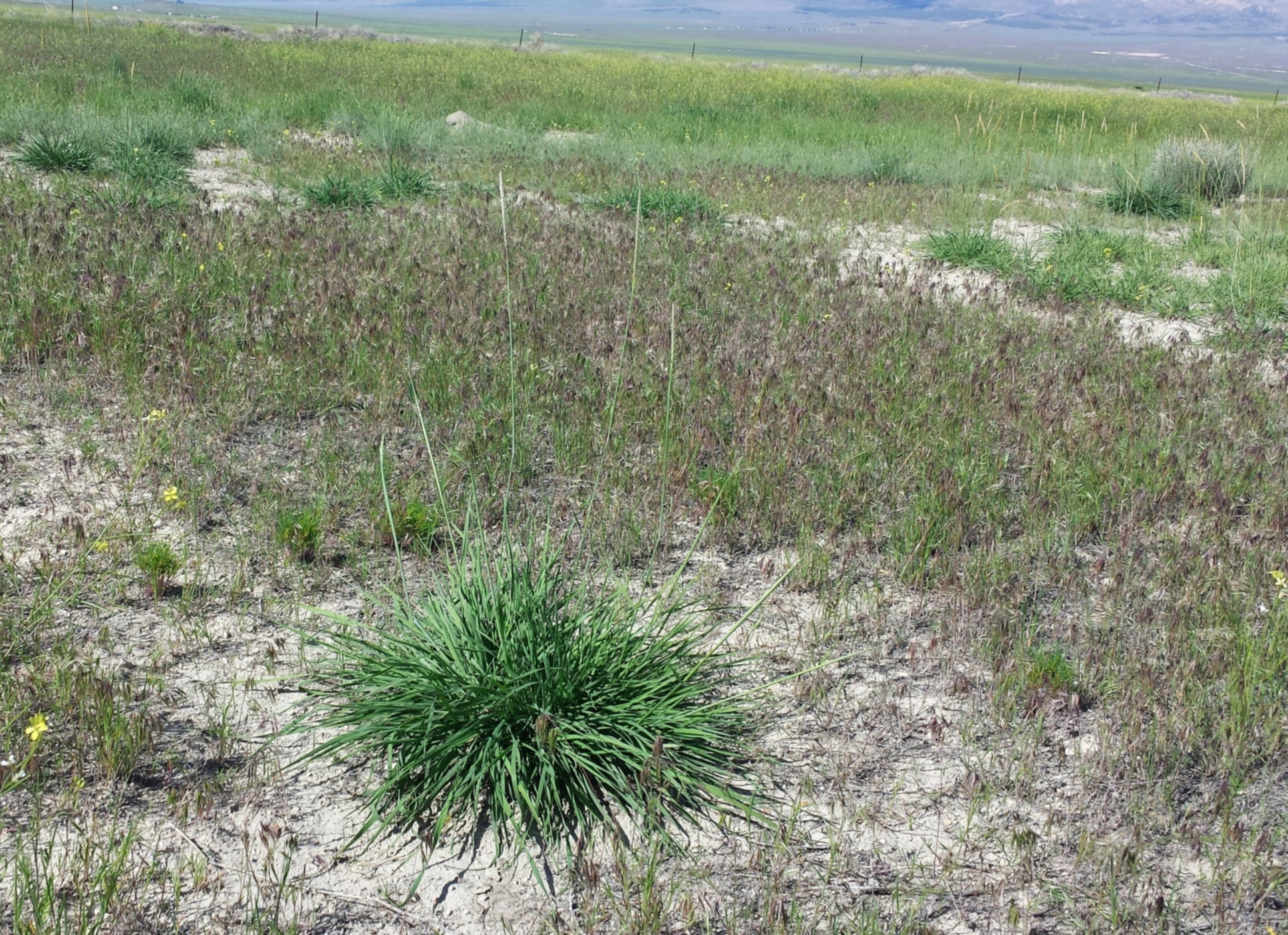Psathyrostachys juncea (Russian wildrye)
Formerly Elymus junceus. Cool season, perennial bunchgrass with an extensive horizontal root system. Adapted a wide range of soil textures and infertile soils; moderately saline and alkaline tolerant. Very drought tolerant, surviving with as little as 8 in. annual precipitation. Cold hardy. May be difficult to establish, but extremely competitive and long-lived thereafter. Starts growth in early spring, produces abundant green basal leave forage. Excellent palatability and can be grazed from late summer through winter, retaining its protein content even when cured. Tolerant of heavy grazing and regrows quickly. Most of the forage sits low in the basal leaves; unsuited for hay production. Use also for arid rangelands, dryland pasture, green strips and fuel breaks. Varieties listed below.
DISTRIBUTION / ADAPTATION
INFORMATION & ATTRIBUTES
Family: Poaceae
Duration: Perennial
Growth Habit: Graminoid
Native Status: Introduced
Season: Cool
Growth Form: Bunchgrass
Mature Height: 36 in.
Annual Precipitation: 10-45 in.
Drought Tolerance: High
Shade Tolerance: Intolerant
Elevation:
Wetland Indicator Status:UPL/FAC
Fire Resistance: No
Fire Tolerance: Medium
SOIL ADAPTATION
Coarse Texture: No
Medium Texture: Yes
Fine Texture: Yes
Salinity Tolerance: Medium
CaCO3 Tolerance: Medium
pH Range: 6.5-9.0
SEEDING NOTES
Seeds per Pound: 162,600
Seeding Rate: 5-10 PLS lbs/acre
Season: Fall
Days to Germination:
VARIETIES
Boizoisky Select - Good seedling vigor, stand establishment and forage yield. (Released 1984)
Boizoisky II - Selected for seedling vigor, seed mass, seed yield, vegetative vigor, forage production and response to drought. Equal to or greater seedling establishment than earlier varieties. Better seedling establishment than Bozoisky-Select. (Released 2006)
Swift - Good seedling emergence from deeper plantings. Resistance to leaf spot. (Released 1978)



